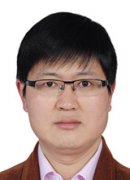邵晓亮
近期热点
资料介绍
个人简历
学习工作简历:
2003年9月-2007年7月,华中科技大学热能与动力工程专业,学士
2007年9月-2014年1月,清华大学建筑学院供热、供燃气、通风及空调工程专业,博士
2014年4月-2016年2月,清华大学建筑学院,博士后
2017年7月-2018年7月,丹麦技术大学(DTU)国际室内环境与能源中心(ICIEE),访问学者
2016年4月-2019年6月,北京科技大学土木与资源工程学院,讲师
2019年7月-至今,北京科技大学土木与资源工程学院,副教授
研究领域
面向需求的高效通风气流组织
室内空气参数分布的快速预测与评价
建筑室内源辨识(污染物、热源、湿源)
洁净室差异性环境参数营造方法
城市地下隧道火灾与人员应急疏散"科研项目:
主持项目
[1] 2019年-2022年,面向个性化舒适需求的室内非均匀热环境营造方法,国家自然科学基金面上项目,51878043,负责人
[2] 2018年-2021年,变风量运行模式下相连隔间洁净度与压力梯度保障方法,十三五国家重点研发计划子课题,2018YFC0705201-3,负责人
[3] 2016年 - 2018年,应对室内多变需求场景的多模通风策略研究,国家自然科学基金项目(青年科学基金),51508299,负责人
[4] 2016年 - 2018年,层式通风下个性化热环境营造潜力与优化控制,基本科研业务费资助项目,FRF-TP-16-006A1,负责人
[5] 2015年 - 2016年,室内个性化热环境的营造方法研究,中国博士后科学基金特别资助项目(第8批),2015T80092,负责人
[6] 2014年 - 2016年,建筑室内动态污染源的辨识方法研究,中国博士后科学基金面上资助项目(第56批
近期论文
代表性论文及著作:
[1] Shao X L, Wang K K, Li X T, Lin Z. Potential of stratum ventilation to satisfy differentiated comfort requirements in multi-occupied zones. Building and Environment, 2018, 143: 329-338.
[2] Shao X L, Wang K K, Li X T. Rapid prediction of the transient effect of the initial contaminant condition using a limited number of sensors. Indoor and Built Environment.2018, DOI: 10.1177/1420326X17753709.
[3] Liang C, Shao X L, Melikov A K , Li X T. Cooling load for the design of air terminals in a general non-uniform indoor environment oriented to local requirements.
Energy and Buildings. 2018, 174: 603-618.
[4] Shao X L, Li X T, Ma X J, Liang C. Multi-mode ventilation: An efficient ventilation strategy for changeable scenarios and energy saving. Building and Environment. 2017, 115: 332-344. 2017.4.
[5] Shao X L, Ma X J, Li X T, Liang C. Fast prediction of non-uniform temperature distribution: A concise expression and reliability analysis. Energy and Buildings. 2017, 141: 295-307.
[6] Shao X L, Li X T, Ma X J, Zhu F F. Long-term prediction of dynamic distribution of passive contaminant in complex recirculating ventilation system. Building and Environment. 2017, 121: 49-66.
[7] Liang C, Shao X L, Li X T. Energy saving potential of heat removal using natural cooling water in the top zone of buildings with large interior spaces. Building and Environment, 2017, 124:323-335.
[8] Shen C, Shao X L, Li X T. Potential of an air curtain system orientated to create non-uniform indoor thermal environment and save energy. Indoor and Built Environment, 2017, 26(2):152-165.
[9] Wang H, Li X T, Shao X L, Wang B L, Lin Y Q. A colour-sequence enhanced particle streak velocimetry method for air flow measurement in a ventilated space. Building and Environment, 2017, 112:77-87.
[10] Shao X L, Li X T, Ma H Y. Identification of constant contaminant sources in a test chamber with real sensors. Indoor and Built Environment. 2016, 25(6): 997-1010
[11] Shao X L, Li X T. Evaluating the potential of airflow patterns to maintain a non-uniform indoor environment. Renewable Energy, 2015, 73:99-108.
[12] Shao X L, Li X T, Liang C, Shan J. An algorithm for fast prediction of the transient effect of an arbitrary initial condition of contaminant. Building and Environment, 2015, 85:298-308.
[13] Shao X L, Li X T, Ma X J, Chen C. Optimising the supply parameters oriented to multiple individual requirements in one common space. Indoor and Built Environment, 2014, 23(6):828-838.
[14] Ma X J, Li X T, Shao X L, Jiang X. An algorithm to predict the transient moisture distribution for wall condensation under a steady flow field. Building and Environment, 2013, 67: 56-68.
[15] Ma X J, Shao X L, Li X T, Lin Y W. An analytical expression for transient distribution of passive contaminant under steady flow field. Building and Environment, 2012, 52:98-106.
[16] Cai H, Li X T, Kong L J, Shao X L. An optimization method of sensor layout to improve source identification accuracy in the indoor environment. International Journal of Ventilation, 2012, 11(2):155-170.
[17] Cai H, Li X T, Kong L J, Ma X J, Shao X L. Rapid identification of single constant contaminant source by considering characteristics of real sensors. Journal of Central South University of Technology, 2012, 19(3):593-599.
[18] Li X T, Cai H, Li R Y, Zhao Y, Ma X J, Shao X L. A theoretical model to calculate the distribution of air age in general ventilation system. Building Services Engineering Research and Technology, 2012, 33(2):159-180.
[19] Li X T, Shao X L, Ma X J, Zhang Y H, Cai H. A numerical method to determine the steady state distribution of passive contaminant in generic ventilation systems. Journal of Hazardous Materials, 2011, 192(1):139-149.
[20] 邵晓亮, 赵荣义. 第2章 室内空气质量的评价方法//张寅平. 中国室内环境与健康研究进展报告2012. 北京:中国建筑工业出版社, 2012:20-35.
[21] 李先庭, 赵彬, 邵晓亮, 等, 译. 建筑通风. Awbi H B著. 北京: 机械工业出版社, 2011. (译著.)
全国暖通学会通风专业委员会秘书
国际期刊Building and Environment、Indoor and Built Environment、Building Simulation等审稿人
相关热点

